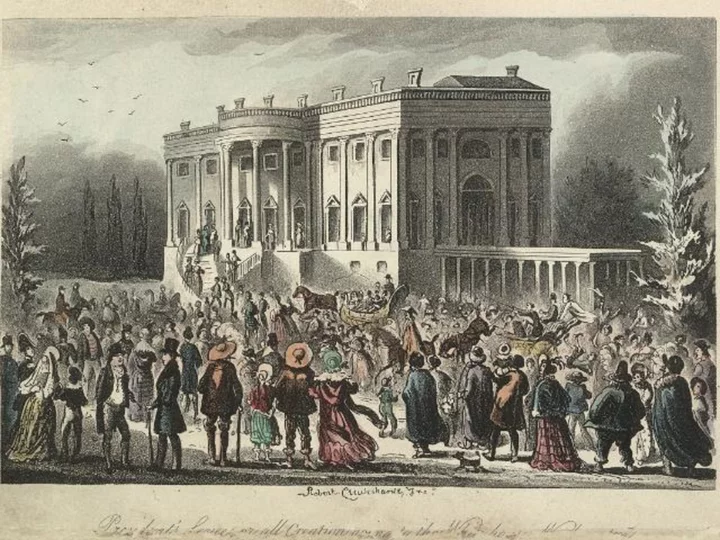It's a coincidence of the 2024 calendar and US history.
March 4, 2024, is the scheduled date to kick off what may be the most consequential of former President Donald Trump's four criminal trials, where he'll answer federal charges in Washington, DC, that he illegally tried to subvert US democracy.
Trump says he was within his rights to contest the election.
The coincidence, as the historian Heather Cox Richardson points out in her newsletter, is that for most of US history, March 4 was Inauguration Day.
That's the date the first Congress scheduled for George Washington to be sworn in as the nation's first president in 1789. That first inauguration slid a bit to April 30 when the counting of electoral votes took longer than expected. But Washington's second inauguration? March 4.
Every subsequent inauguration for more than 100 years took place on March 4, with a few exceptions.
On a few years, in 1821, 1849, 1877 and 1917, when March 4 fell on a Sunday, inaugurations took place on March 5, according to the Library of Congress. In 2024, March 5 happens to be the planned date for Super Tuesday, the most consequential day in party primaries.
Inaugurations worth recalling
On his first inauguration date, March 4, 1829, the new, outsider president Andrew Jackson, Trump's favorite other than himself, opened up the doors of the White House to the public and a raucous party ensued, revelers trashed the place and Jackson had to escape out of a window.
On March 4, 1841, William Henry Harrison chose not to wear a hat or coat for his nearly two-hour inauguration speech in wet weather. After wearing wet clothes to receptions celebrating his inauguration, he developed pneumonia and died a little more than a month later. He is still the shortest-serving president and the first to die in office. His successor, John Tyler, was sworn in on April 6.
The rise of January 20
March 4 remained Inauguration Day until after the ratification of the 20th Amendment in 1933, which means the first person to be inaugurated on the current Inauguration Day of January 20 was Franklin D. Roosevelt, on his second inauguration in 1937.
The idea behind changing Inauguration Day was to shorten the so-called "lame-duck" period between Election Day and the start of a new administration. Today, these lame-duck periods are frequently marked by bursts of activity in Congress. It was during the longer lame duck in 1922 that a standoff over a ship subsidy bill sparked movement toward the 20th Amendment, according to the National Constitution Center.
Separately, and of more historical consequence, it was during the interregnum between the 1860 election and Abraham Lincoln's inauguration on March 4, 1861, that South Carolina, Mississippi, Florida, Alabama, Georgia, Louisiana and Texas seceded from the US, sparking the Civil War. Several other states -- Virginia, Arkansas, North Carolina and Tennessee -- seceded after Lincoln's inauguration.
Early in US history, states chose their own Election Day in the month leading up to the date when the Electoral College met. Since 1848, Election Day has changed from year to year -- it is the first Tuesday after the first Monday in November in election years.
But Inauguration Day has always been set in stone in the Constitution. First as March 4, and now as January 20.

